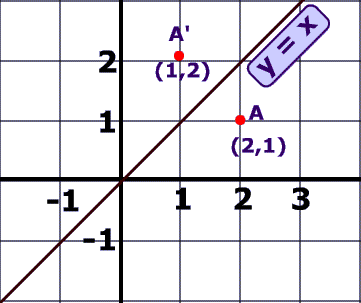Glide reflection
The combination of a reflection in a line and a translation along
that line.
Orientation
Orientation refers to the arrangment of points relative to one another after a transformation
has occured.
Isometry
An isometry is a transformation that preserves length.
A direct isometry preserves orientation.
Opposite isometry changes the order clockwise or counter clockwise.
Invariant
A figure or property that remains unchanged under a transformation of the plane is
referred to as invariant. Meaning no variations(changes) have occured.
Question
word that means it preserves the same length?



 ) that produces an image that is the
) that produces an image that is the 








